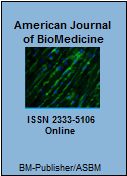
![]()
Abstract
Ischemic stroke is characterized by the sudden loss of blood circulation to an area of the brain, resulting in a corresponding loss of neurologic function. Acute ischemic stroke is caused by thrombotic or embolic occlusion of a cerebral artery and is more common than hemorrhagic stroke. Setting and strategies of mechanical ventilation with positive end-expiratory pressure (PEEP) in acute lung injury (ALI) remains unclear. No published studies have evaluated the risks of lung injury after cardiovascular (CV) events. Therefore, we investigated the incidence, risk factors, and the clinical outcomes of lung injury after patients with stroke. We retrospectively studied 344 stroke patients from the neurology ICU and RCU between 2013 and 2016. The overall of this retrospective analysis showed that the ALI in patients with stroke is associated with worse clinical outcomes after stroke. Prevention of ALI seems to be very important among these patients, because they are exposed to many risk factors for developing ALI.
Keywords: Acute lung injury; Retrospective; Cardiovascular
Copyright © 2021 by The American Society for BioMedicine and BM-Publisher, Inc.
- Jørgensen ME, Torp-Pedersen C, Gislason GH, et al. Time elapsed after ischemic stroke and risk of adverse cardiovascular events and mortality following elective noncardiac surgery. JAMA 2014;312(3):269-77.
https://doi.org/10.1001/jama.2014.816 - Jüttler E, Unterberg A, Woitzik J, et al. Hemicraniectomy in older patients with extensive middle-cerebral-artery stroke. N Engl J Med. 2014;370(12):1091-100.
https://doi.org/10.1056/NEJMoa1311367 - Ropper AH. Hemicraniectomy--to halve or halve not. N Engl J Med 2014;370(12):1159-60.
https://doi.org/10.1056/NEJMe1315721 - Shiber JR, Fontane E, Adewale A. Stroke registry: hemorrhagic vs ischemic strokes. Am J Emerg Med 2010;28(3):331-3.
https://doi.org/10.1016/j.ajem.2008.10.026 - Culebras A, Messé SR, Chaturvedi S, Kase CS, Gronseth G. Summary of evidence-based guideline update: prevention of stroke in nonvalvular atrial fibrillation: report of the Guideline Development Subcommittee of the American Academy of Neurology. Neurology 2014;82 (8):716-24.
https://doi.org/10.1212/WNL.0000000000000145 - Adams HP Jr, Effron MB, Torner J, et al. Emergency administration of abciximab for treatment of patients with acute ischemic stroke: results of an international phase III trial: Abciximab in Emergency Treatment of Stroke Trial (AbESTT-II). Stroke 2008;39(1):87-99.
https://doi.org/10.1161/STROKEAHA.106.476648 - Sare GM, Geeganage C, Bath PM. High blood pressure in acute ischaemic stroke--broadening therapeutic horizons. Cerebrovasc Dis 2009;Suppl 1:156-61.
https://doi.org/10.1159/000200454 - Potter JF, Robinson TG, Ford GA, et al. Controlling hypertension and hypotension immediately post-stroke (CHHIPS): a randomised, placebo-controlled, double-blind pilot trial. Lancet Neurol 2009;8(1):48-56.
https://doi.org/10.1016/S1474-4422(08)70263-1 - Sandset EC, Bath PM, Boysen G, et al. The angiotensin-receptor blocker candesartan for treatment of acute stroke (SCAST): a randomised, placebo-controlled, double-blind trial. Lancet. 2011;377(9767):741-50.
https://doi.org/10.1016/S0140-6736(11)60104-9 - Gobin YP, Starkman S, Duckwiler GR, et al. MERCI 1: a phase 1 study of Mechanical Embolus Removal in Cerebral Ischemia. Stroke 2004;35(12):2848-54.
https://doi.org/10.1161/01.STR.0000147718.12954.60 - Smith WS, Sung G, Starkman S, et al. Safety and efficacy of mechanical embolectomy in acute ischemic stroke: results of the MERCI trial. Stroke 2005 ;36(7):1432-8.
https://doi.org/10.1161/01.STR.0000171066.25248.1d - Smith WS, Sung G, Saver J, et al. Mechanical thrombectomy for acute ischemic stroke: final results of the Multi MERCI trial. Stroke 2008;39(4):1205-12.
https://doi.org/10.1161/STROKEAHA.107.497115 - Bose A, Henkes H, Alfke K, Reith W, Mayer TE, Berlis A. The Penumbra System: a mechanical device for the treatment of acute stroke due to thromboembolism. AJNR Am J Neuroradiol 2008;29(7):1409-13.
https://doi.org/10.3174/ajnr.A1110 - Sorensen AG, Copen WA, Ostergaard L, et al. Hyperacute stroke: simultaneous measurement of relative cerebral blood volume, relative cerebral blood flow, and mean tissue transit time. Radiology 1999;210(2):519-27.
https://doi.org/10.1148/radiology.210.2.r99fe06519 - Camerlingo M, Casto L, Censori B, Ferraro B, Gazzaniga GC, Mamoli A. Transcranial Doppler in acute ischemic stroke of the middle cerebral artery territories. Acta Neurol Scand 1993;88(2):108-11.
https://doi.org/10.1111/j.1600-0404.1993.tb04200.x - Sagar G, Riley P, Vohrah A. Is admission chest radiography of any clinical value in acute stroke patients?. Clin Radiol 1996;51(7):499-502.
https://doi.org/10.1016/S0009-9260(96)80190-5 - Meerwaldt R, Slart RH, van Dam GM, Luijckx GJ, Tio RA, Zeebregts CJ. PET/SPECT imaging: from carotid vulnerability to brain viability. Eur J Radiol 2010;74(1):104-9.
https://doi.org/10.1016/j.ejrad.2009.01.034 - Handschu R, Poppe R, Rauss J, Neundörfer B, Erbguth F. Emergency calls in acute stroke. Stroke 2003;34(4):1005-9.
https://doi.org/10.1161/01.STR.0000063366.98459.1F - Williams JE, Rosamond WD, Morris DL. Stroke symptom attribution and time to emergency department arrival: the delay in accessing stroke healthcare study. Acad Emerg Med 2000;7(1):93-6.
https://doi.org/10.1111/j.1553-2712.2000.tb01900.x - Zweifler RM, Mendizabal JE, Cunningham S, Shah AK, Rothrock JF. Hospital presentation after stroke in a community sample: the Mobile Stroke Project. South Med J 2002;95(11):1263-8. [Medline] https://doi.org/10.1097/00007611-200211000-00007
- Lacy CR, Suh DC, Bueno M, Kostis JB. Delay in presentation and evaluation for acute stroke: Stroke Time Registry for Outcomes Knowledge and Epidemiology (S.T.R.O.K.E.). Stroke 2001;32(1):63-9.
https://doi.org/10.1161/01.STR.32.1.63 - Puolakka T, Väyrynen T, Häppölä O, Soinne L, Kuisma M, Lindsberg PJ. Sequential analysis of pretreatment delays in stroke thrombolysis. Acad Emerg Med 2010;17(9):965-9.
https://doi.org/10.1111/j.1553-2712.2010.00828.x - Ford AL, Williams JA, Spencer M, et al. Reducing door-to-needle times using Toyota's lean manufacturing principles and value stream analysis. Stroke 2012;43(12):3395-8.
https://doi.org/10.1161/STROKEAHA.112.670687 - Bruno A, Kent TA, Coull BM, et al. Treatment of hyperglycemia in ischemic stroke (THIS): a randomized pilot trial. Stroke 2008;39(2):384-9.
https://doi.org/10.1161/STROKEAHA.107.493544
Who Can Become a Reviewer?
Any expert in the article's research field can become a reviewer with American Journal of Biomedicine. Editors might ask you to look at a specific aspect of an article,...
Research Article
http://dx.doi.org/10.18081/2333-5106/017-4/183-194
American Journal of BioMedicine Volume 9, Issue 2, pages 164-172
Received April 12, 2021; revised May 27, 2021; accepted June 11, 2021; published June 30, 2021
How to cite this article
Wira MF, Hu QY, Li ZY, Li GK, Joseph B Becker. Epidemiology of acute lung injury in patients with cerebrovascular accident: a retrospective study. American Journal of BioMedicine 2021;9(2):164-172.
Research Article
1. Abstract
2. Keywords
3. Introduction
4. Methods
5. Results
6. Discussion
7. References
